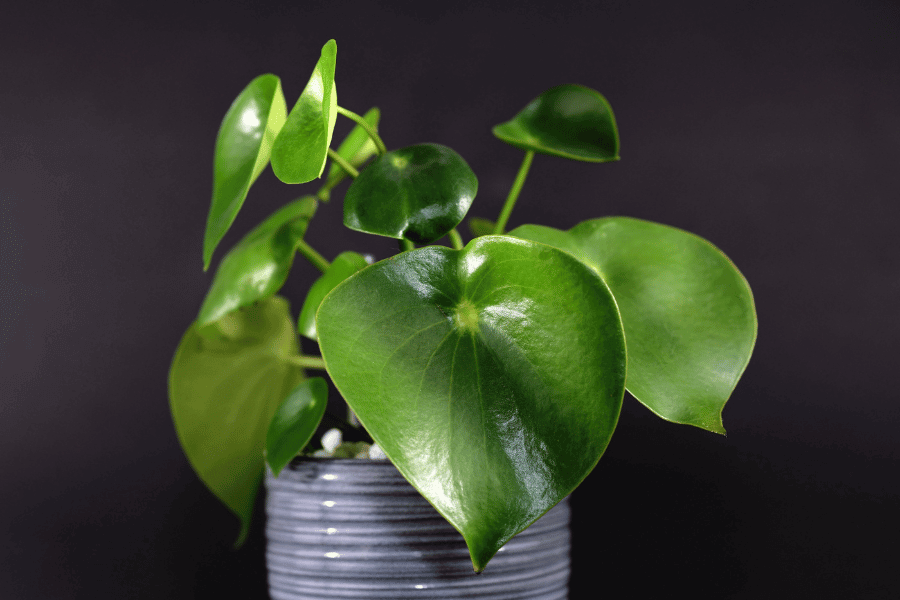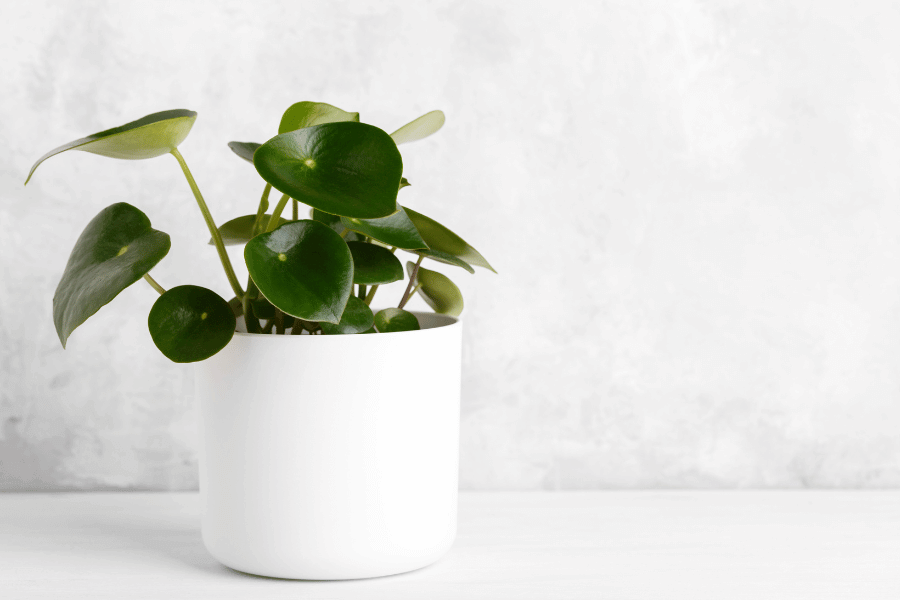Are you looking to add a touch of lush greenery to your indoor space? Look no further than the Raindrop Plant, scientifically known as Peperomia Polybotrya. With its striking foliage resembling raindrops cascading from a stem, this plant will captivate any plant lover’s heart. As an avid plant enthusiast, I can attest to the joy of nurturing these little beauties. So, let’s dive into the beautiful world of Raindrop Plant care and discover how to grow Raindrop Plant successfully.
Introduction to Raindrop Plant
When it comes to the lighting requirements of the Raindrop Plant, it thrives in bright, indirect light. Think of it as a plant that enjoys a cozy spot near a window but prefers to avoid direct sunlight. The Raindrop Plant’s lush foliage can be sensitive to intense rays, which may cause leaf scorching. Aim for a location with medium to high light conditions, such as a north or east-facing window. If natural light is limited in your space, you can supplement it with fluorescent grow lights placed a few feet above the plant. Finding the perfect balance of light will help your Raindrop Plant flourish and maintain its stunning raindrop-shaped leaves.
Raindrop Plant Care Guide

Lighting Requirements
The Raindrop Plant, also known as the Coin-Leaf Peperomia, has specific lighting requirements contributing to its overall health and growth. While it appreciates enough light, it’s essential to strike a balance and avoid exposing it to too much direct sunlight. Indirect sunlight is ideal for this plant, allowing it to thrive without the risk of leaf burn. However, the Raindrop Plant is also adaptable to low light conditions, making it a suitable choice for areas with less natural light. Remember that too little light can result in slower growth and leggy stems. By providing your Raindrop Plant with the right amount of light, you can ensure its foliage remains vibrant and its growth stays on track.
Watering
Proper watering is essential for maintaining a healthy Raindrop Plant. Establishing a regular watering schedule is crucial to prevent overwatering, which can harm the plant’s well-being. Allow the top inch of soil to dry out before watering again, as this helps prevent waterlogged roots. The best way to water your Raindrop Plant is to thoroughly soak the soil and allow the excess water to drain out completely. Remember, it’s always better to underwater slightly than to overwater. Following a mindful watering routine will give your Raindrop Plant the hydration it needs while avoiding the pitfalls of excessive moisture.
Soil
Regarding the Raindrop Plant’s soil, choosing an appropriate soil mix that promotes its well-being is paramount. A well-draining soil mix is essential to prevent water from sitting around the roots and causing root rot. Aim for a soil mix that allows excess water to flow freely and doesn’t hold onto moisture for too long. Combining peat moss, perlite, and a small amount of sand creates a balanced soil mix that provides proper drainage while retaining enough moisture for the Raindrop Plant’s needs. It’s also a good practice to use fresh soil when repotting your Raindrop Plant to provide it with the necessary nutrients for growth. Using the right soil mix and maintaining moist soil create an ideal environment for your Raindrop Plant to thrive.
Temperature and Humidity
The Raindrop Plant thrives in warmer temperatures, making it well-suited for indoor environments. The ideal temperature range for this plant is between 65°F and 80°F (18°C – 27°C) during the day, ensuring it receives the warmth it craves. It’s essential to avoid exposing the Raindrop Plant to temperatures below 60°F (15°C), as it prefers consistently warm conditions. In addition to temperature, moderate humidity levels benefit the Raindrop Plant’s overall health. You can achieve this by placing the plant near a humidifier, misting its leaves regularly, or even setting a tray of water nearby to increase the surrounding moisture. By providing the Raindrop Plant with the warmth and high humidity it desires, you’ll create an environment where it can thrive and display its stunning foliage.
Fertilizing Routine
Maintaining a proper fertilizing routine is essential for the optimal growth and vigor of your Raindrop Plant. A balanced liquid fertilizer explicitly formulated for houseplants is a great choice. During the active growing season, typically in spring and summer, fertilize your Raindrop Plant once a month. Dilute the fertilizer to half or a quarter of the recommended strength to avoid overfeeding. Applying fertilizer to moist soil is the best approach to prevent potential root burns. However, remember to reduce or suspend fertilization during the dormant period in fall and winter, as the plant’s growth slows down. Following a consistent and appropriate fertilizing routine gives your Raindrop Plant the nutrients it needs to flourish and maintain its lush, raindrop-like foliage.
Pruning and Propagation
Pruning is essential to Raindrop Plant care to maintain its shape and encourage healthy growth. The easiest way to prune your Raindrop Plant is by simply cutting the edge of any yellowing, damaged, or overgrown leaves. Trimming these leaves improves the plant’s aesthetics and promotes new growth. If your Raindrop Plant becomes leggy or sparse, more drastic pruning can be done by trimming back the stems to encourage bushier growth. Remember to use clean and sharp pruning tools to avoid damaging the plant. By regularly pruning your Raindrop Plant, you can keep it looking tidy and vibrant while allowing it to thrive in its indoor environment.
Raindrop peperomia is also relatively easy to propagate. One method is stem cuttings or leaf cuttings. Simply take a healthy stem cutting, around 3-4 inches long, and removes the lower leaves. Place the cutting in a small pot with a well-draining potting mix and keep it lightly moist. After a few weeks, new roots should develop, indicating successful propagation.
>> To learn more about raindrop peperomia propagation, read our guide here.
Pests and Common Issues
While the peperomia raindrop plant, also known as Coin Leaf Peperomia, is generally resistant to pests and diseases, it is still essential to be vigilant and address any potential issues promptly. One common pest that may affect this plant is red spider mites. These tiny pests can cause stippling and webbing on the leaves. Regularly inspect your Raindrop Plant for signs of infestation, such as webbing or tiny crawling insects. If detected, treat the plant with an appropriate organic insecticidal soap or neem oil solution to eliminate the pests.
In addition to pests, Raindrop Plants can be susceptible to fungal diseases, particularly if overwatered or there is poor air circulation around the plant. To prevent fungal issues, avoid excessive watering and ensure proper drainage. If you notice signs of fungal diseases, such as leaf spots or powdery mildew, remove the affected leaves and improve air circulation around the plant by spacing it away from other plants or using a fan.
Regularly monitoring your Raindrop Plant for pests and common issues and taking prompt action will help keep it healthy and thriving. Remember that a proactive approach is vital to maintaining the beauty of your Raindrop Plant and ensuring its longevity.

Showcasing Your Raindrop Plant
The Raindrop Plant, with its fleshy leaves resembling raindrops, brings a touch of exotic beauty reminiscent of the lush jungle floor. It’s unique foliage and vibrant green hues make it an excellent choice for showcasing the wonders of nature indoors. Place your Raindrop Plant in a decorative pot or hanging basket to enhance its visual impact, allowing its cascading leaves to drape elegantly. You can also create a captivating display by grouping several Raindrop Plants, adding a lush, tropical touch to your home. For an extra touch of style, consider using pots with patterns or colors that complement the plant’s foliage. And don’t forget to place some pebbles or decorative rocks at the bottom of the pot to enhance drainage and add an organic touch. With these tips, you can create a stunning showcase for your Raindrop Plant, transforming your living space into a stunning oasis of greenery.
Repotting Raindrop Plant – When and How
Repotting your Raindrop Plant is essential to its care when it outgrows its current pot or requires fresh soil. The best time to repot the Raindrop Plant is during its active growing season in the spring. Look for signs like roots protruding from the drainage holes or the plant becoming top-heavy, indicating that it needs a larger pot. When repotting, choose a pot one size larger than its current pot to allow for future growth. Fill the new pot with a well-draining soil mix, leaving enough space for the roots. Gently remove the plant from its old pot, loosen the root ball if necessary, and place it in the new pot. Fill in the gaps with fresh soil, ensuring the plant is at the same level as in the old pot. After repotting, water the Raindrop Plant thoroughly and place it in its preferred light conditions. Repotting allows your Raindrop Plant to thrive by providing fresh soil and room for its roots to expand.
How to Clean Raindrop Plants?
Cleaning your Raindrop Plant is essential to its care routine to keep its foliage fresh and vibrant. Dust and debris can accumulate on the leaves over time, hindering the plant’s ability to absorb light and potentially leading to pest problems. Cleaning your Raindrop Plant is a simple process. Start by gently wiping the leaves with a soft, damp cloth or a sponge. You can also use a mild soapy solution by mixing a few drops of liquid dish soap with water. Be sure to rinse off any soap residue thoroughly. Alternatively, gently shower your Raindrop Plant or place it under a faucet, allowing water to run over the leaves to wash away dust. Avoid using any leaf shine products as they can clog the pores of the leaves. Regularly cleaning your Raindrop Plant improves its appearance and promotes healthy growth by ensuring it can effectively photosynthesize.
Conclusion
Growing Peperomia Polybotrya, or the Raindrop Plant, is a rewarding experience for any plant lover. Its unique foliage, adaptability, and low maintenance needs make it an excellent choice for beginners and seasoned indoor gardeners. Remember to provide it with bright, indirect light, moderate humidity, and well-draining soil to ensure its optimum growth. Enjoy the process of caring for your Raindrop Plant, and watch as it brings life and beauty to your living space. Happy gardening!
Recent Posts
Unlocking the secret to expanding your begonia maculata family is like discovering a treasure trove of green goodness. If you've ever marveled at the stunning beauty of angel wing begonia leaves and...
If you've ever found yourself marveling at the surreal beauty of air plant blooms, you're in for a treat! These enchanting bursts of color amidst a sea of lush green foliage are like nature's way of...


